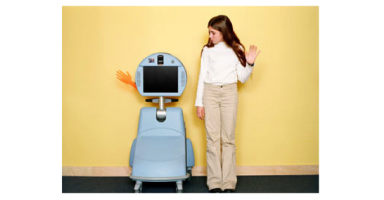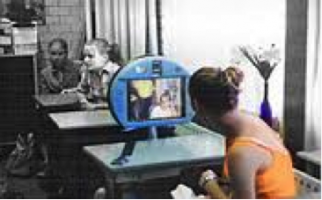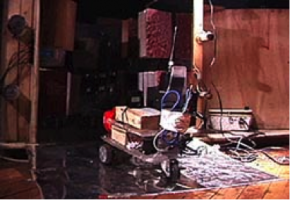DATE – 2000
DISCIPLINE – Design
MEDIUM – Telepresence
STATUS – 100 deployed
WEBLINKS
http://www-03.ibm.com/services/ca/en/mobility/work_pebbles.html
Telepresence display
Telbotics – PEBBLES
Remarkable robots create a “lifeline” for remote children
Challenge
For children receiving treatment for acute illnesses or injuries, it often means weeks or months spent in the hospital. Many of these children lose contact with what is going on in the classroom: homework can pile up, class trips may need to be skipped, and social interaction with their peers can be quite limited. All of these factors can add to the stress caused by their medical conditions.These young students often feel isolated and saddened by their predicament. Even after they are better, they may feel reluctant to return to school since their classmates may be confused by their mysterious absence.
Solution
TThe PEBBLES (Providing Education By Bringing Learning Environments to Students) project was the result of five years of research and development by Telbotics Inc. in cooperation with the University of Toronto and Ryerson University. The current version of PEBBLES has been redesigned and manufactured in partnership with the IBM e-access department. The PEBBLES project incorporates the world’s first robotic students whereby two child-sized robots help connect a homebound or hospitalized child with their own classroom. The child gets a robot, whose head includes a monitor and camera, in his or her room. At the child’s school, the second robot sits in his or her class and broadcasts real time audio, video, and documentation back to the child’s location. A hand-held controller allows the child to participate in the class by rotating the robot’s head and raising the robot’s hand.
Results
PEBBLES is easy to operate, allowing teachers to focus on the needs of all students. Students, in both the classroom and the hospital, love it. PEBBLES serves as a bridge for hospitalized children in facilities across Canada and the United States. It has been used in Toronto’s Hospital for Sick Children and the Ronald McDonald House. In the United States, PEBBLES units are installed in a number of hospitals including Yale-New Haven Children’s Hospital, Miami Children’s Hospital, and Rainbow Babies and Children’s Hospital. Each robot is engineered by IBM, balancing our outstanding technology with simplicity of operation.

















